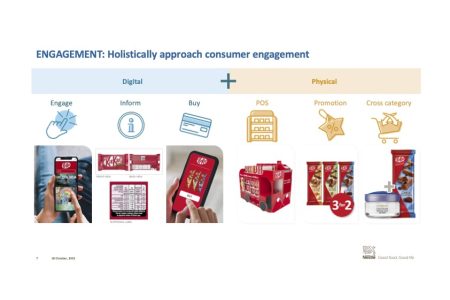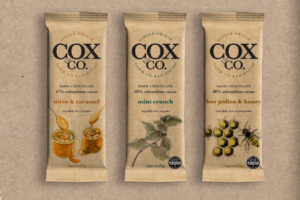Nestlé International Travel Retail has announced an ambitious plan for driving sales of confectionery and the wider food category in global travel retail through a newly developed VERSE (Value, Engagement, Regeneration, Sense of Place and Execution) model. Through active collaboration with its retail partners, the company is set to reignite growth and delight passengers.
NITR General Manager Stewart Dryburgh commented: “There can be no doubt our industry is going through the most challenging period in its history. The good news is that the recovery is in progress; it may be slower than we want and geographically patchy, but the first green shoots are visible.
“We believe there are significant opportunities to accelerate that return to growth. Retail has never been more critical to airports and, according to a recent Bain/Castlepole study, is destined to become more than 50% of major airport revenues in the near future.”
Dryburgh points to changing consumer needs against which food is superbly positioned to deliver, including product assortments that are unique, sustainable or deliver a true sense of place. “Products which critically offer accessible price points to drive footfall back into stores,” he said. He also points to passengers from fast growing emerging markets who will have differing needs and purchase occasions that create revenue opportunities for the food category.
Dryburgh highlights the healthy growth of food in general in domestic markets, whilst it has stalled in travel retail. He also shone the spotlight on the disparity between domestic and travel retail when it comes to confectionery.
“In domestic markets confectionery represents 7% of packaged food, whilst in travel retail it represents 77%. This not to say we’re over focused on confectionery, but that we have a major opportunity to exploit the growth potential of other segments in food,” he commented.
“To be 100% clear, confectionery was, is and will continue to be the beating heart of the food category, but greater value creation can be achieved by taking other strongly growing segments within domestic markets and translating them into growth opportunities in Travel Retail.”
As the number one driver of cross category purchase and the second most purchased category (M1nd- Set Cross Category Research Dec 2021), Dryburgh believes food can play a leading role in both recruiting a new generation of shoppers and converting browsers to buyers.
“Our ambition is clear,” he said, “to take food from the second place to the most purchased category in travel retail – a food item in half of all baskets by 2030.”
To achieve this ambition the VERSE model has been developed to provide a pathway to shopper recruitment and meet this category growth ambition.
Price is what consumers pay, but value is more than price; it is the bundle of benefits that the consumer receives, encompassing not only great brands but also exclusive products, service, experiences and more. Value needs to be created for all stakeholders moving forwards.
In looking at segments which have potential beyond confectionery, Dryburgh highlights the performance of milk powder in the Middle East, led by the NIDO brand, as a “great testimonial to how propositions beyond confectionery have, for over more than 25 years, created value for all stakeholders in that region, turning a specific passenger segment into a regular shopper”. In the last decade alone retailers in the region have sold over $1/3 billion dollars of milk powder. “Margins may not be as high as classic travel retail categories, but the key here question is: Is it better to have 50% of $370m or 65% of nothing?” he questioned.
Other categories such as biscuits and spreads have more recently started to appear and generate growth in travel retail and there remain a wide range of key opportunities in major segments with leading global brands, such as coffee led by Nescafe, and infant nutrition for Chinese consumers led by illuma.
Engagement is critical to recruiting shoppers. Dryburgh stresses the need to adopt an end-to-end approach – creating a truly omnichannel nel experience – a marriage of digital and physical experiences all along the customer journey. We must remember that over 55% of customers decide if they are are going to shop before they leave home (m1nd -set Digital research 2020) and communicate pre travel,” he said.
Regeneration is a new concept which Nestlé launched this September. “We all understand the importance of sustainability, but at its core regeneration is about going beyond sustainability and helping to protect, renew and restore,” continued Dryburgh highlighting PI insights 2020 Sustainability Research for TFWA research that shows sustainability impacts on purchase decision for 71% of travel retail consumers while 78% are concerned about their impact on the environment. “Regeneration will be a concept that will resonate with a whole new generation of shoppers who do not yet shop in travel retail,” he said, pointing to the move to paper packaging for Smarties as an award-winning, first step example which is generating significant growth in domestic markets.
Sense of Place will continue to be key to converting passengers to shoppers in travel retail. Continued Dryburgh: “Food can most definitely champion this best by delivering products and experiences with instore theatre that capitalise on this core shopper purchase driver. Maple syrup from Canada, dates from the UAE, cheese from France etc. This can also play to the sustainability credentials of retailers and airports.”
Execution is what consumers see in-store and where initiatives become tangible. Flawless execution will be crucial to unlocking the growth opportunities that are available.
Dryburgh believes that the VERSE model thinking can work for all categories within travel retail, fueling total industry growth.
But to realise the opportunity, Dryburgh says that the industry needs to reprioritize food, recognizing it as one overarching category with three sub-categories, each of which has distinct roles.
“We must build on the dynamic core which is confectionery, strategically adding sub-sectors such as coffee and infant nutrition with the leading global brands to the fore. Additionally, by tactically exploiting the significant power of local food products we can add another layer of growth. There is so much opportunity out there, we just need to work together to harness the undoubted potential!”
To stay up to date on the latest, trends, innovations, people news and company updates within the global confectionery market please register to receive our newsletter here
Media contact
Kiran Grewal
Editor, International Confectionery
Tel: +44 (0) 1622 823 922
Email: editor@in-confectionery.com










